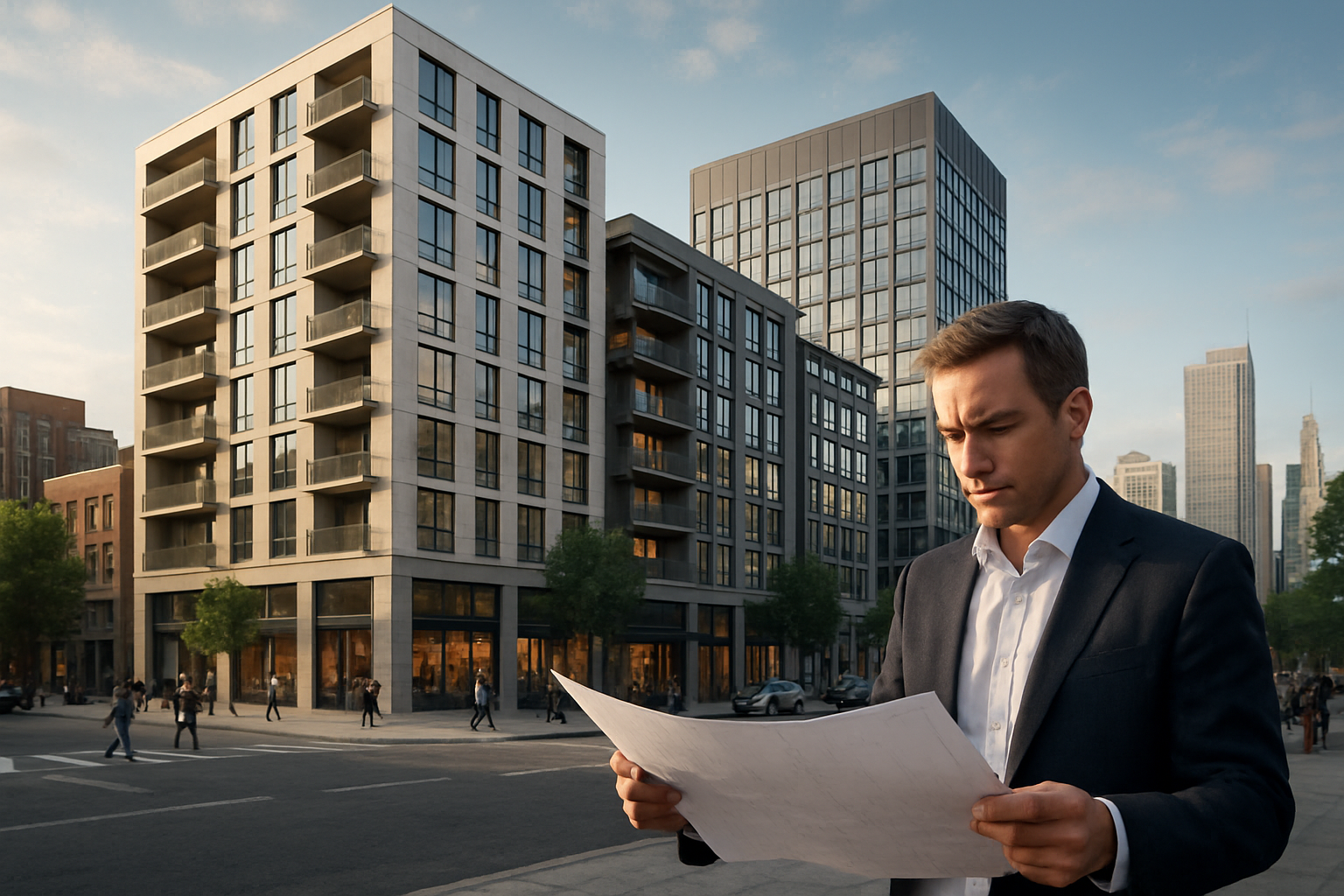Adaptive Reuse: Transforming Commercial Spaces into Residential Gems
In the ever-evolving landscape of real estate, a new trend is reshaping urban skylines and revitalizing forgotten properties. Adaptive reuse, the practice of converting commercial buildings into residential spaces, is gaining momentum across cities worldwide. This innovative approach not only breathes new life into underutilized structures but also offers unique living experiences for homebuyers seeking character and history in their dwellings. As vacancy rates in office buildings continue to rise, developers and investors are turning to adaptive reuse as a sustainable and profitable solution to meet housing demands.

Historically, adaptive reuse projects were primarily focused on converting old warehouses or factories into loft apartments. However, the scope has expanded dramatically, now encompassing office buildings, schools, churches, and even retail spaces. This shift is partly due to the changing nature of work, with remote and hybrid models reducing the demand for traditional office spaces.
Economic and Environmental Benefits
The financial advantages of adaptive reuse are compelling for developers and investors. Repurposing existing structures often proves more cost-effective than new construction, as the basic building shell and infrastructure are already in place. This can lead to significant savings in materials and labor costs, making adaptive reuse an attractive option in markets where land is scarce or expensive.
From an environmental perspective, adaptive reuse aligns with sustainability goals by reducing waste and conserving resources. By repurposing existing buildings, developers can minimize the need for new construction materials and reduce the carbon footprint associated with demolition and rebuilding. This approach also helps preserve the embodied energy of existing structures, which refers to the total energy consumed in the original construction process.
Challenges and Considerations in Adaptive Reuse Projects
While adaptive reuse offers numerous benefits, it also presents unique challenges. One of the primary hurdles is navigating zoning regulations and building codes, which may not easily accommodate the transition from commercial to residential use. Developers often need to work closely with local authorities to obtain necessary permits and variances.
Structural considerations also play a crucial role in adaptive reuse projects. Commercial buildings may require significant modifications to meet residential standards, including upgrading HVAC systems, improving insulation, and reconfiguring floor plans. Historic buildings present additional challenges, as preservation requirements may limit the extent of alterations allowed.
Market Demand and Buyer Preferences
The appeal of adaptive reuse properties to homebuyers is multifaceted. Many are drawn to the unique character and historical significance of repurposed buildings, which offer a distinctive living experience compared to traditional residential developments. Features such as high ceilings, large windows, and exposed brick walls are particularly attractive to buyers seeking an urban, loft-style aesthetic.
Location is another key factor driving demand for adaptive reuse projects. Many commercial buildings slated for conversion are situated in prime urban areas, offering residents easy access to amenities, transportation, and cultural attractions. This aligns with the preferences of millennials and young professionals who prioritize walkable neighborhoods and urban living.
Case Studies: Successful Adaptive Reuse Projects
Several notable adaptive reuse projects have demonstrated the potential of this approach. In New York City, the Woolworth Building, once the world’s tallest skyscraper, now houses luxury condominiums in its upper floors while maintaining office space below. This project showcases how iconic buildings can be reimagined for modern living without sacrificing their historical significance.
In Chicago, the Old Post Office, a massive Art Deco structure that sat vacant for decades, has been transformed into a mixed-use development featuring office space, retail, and amenities. While not primarily residential, this project illustrates the potential for large-scale adaptive reuse to revitalize urban areas and create vibrant, multi-functional spaces.
Future Outlook and Emerging Trends
As the real estate market continues to evolve, adaptive reuse is poised to play an increasingly important role in urban development. The ongoing shift towards remote work and the resulting surplus of office space present significant opportunities for conversion to residential use. This trend is likely to accelerate in the coming years, particularly in cities with aging building stock and housing shortages.
Emerging technologies are also shaping the future of adaptive reuse. Advanced modeling and design tools allow developers to visualize and plan conversions more effectively, while innovative construction techniques can streamline the renovation process. Additionally, the integration of smart home technologies in adaptive reuse projects is enhancing the appeal of these properties to tech-savvy buyers.
In conclusion, adaptive reuse represents a compelling solution to various challenges facing the real estate industry, from sustainability concerns to changing market demands. As cities continue to evolve, the creative repurposing of existing buildings will play a crucial role in shaping the urban landscape and meeting the housing needs of future generations. For investors, developers, and homebuyers alike, adaptive reuse offers a unique opportunity to participate in the preservation and transformation of our built environment.





